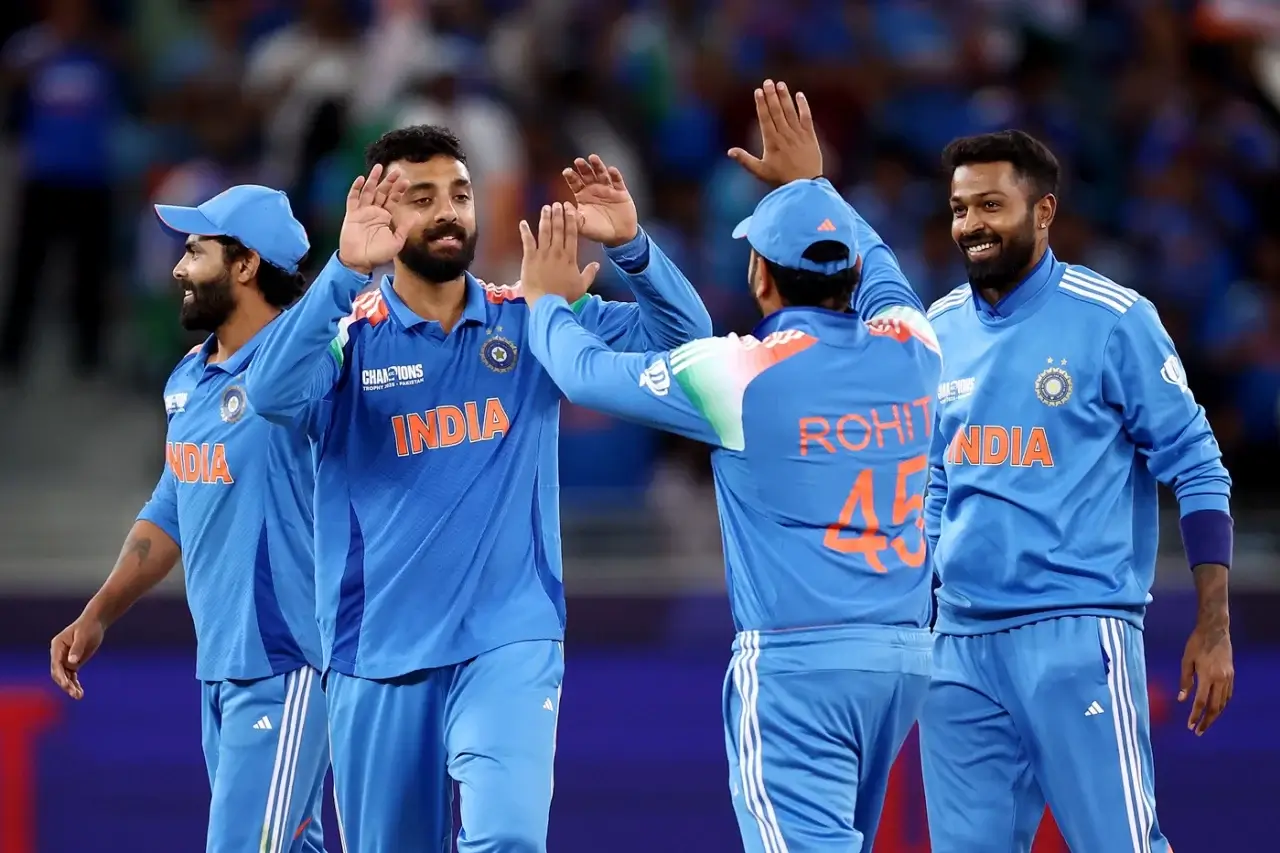Australia arrived at the Gold Coast full of confidence after a long stretch of T20 success. Their top order had been brutal against pace and fearless against most attacks. But India’s spinners turned that confidence into confusion on a night that tested Australia’s adaptability. On a surface that gripped, drifted, and punished impatience, India’s slow bowlers completely controlled the rhythm of play.
Varun Chakravarthy, Axar Patel, and Washington Sundar combined for six wickets in just 9.2 overs. Their plan was simple but devastating—tight lines, smart pace variation, and relentless accuracy. Australia’s strong powerplay intent was halted as the spinners built pressure in the middle overs. Even Nathan Ellis admitted the conditions and precision caught them off guard.
This match revealed what raw pace could not: Australia’s ongoing struggle against high-class spin. It was also a timely reminder before the T20 World Cup 2026 in India and Sri Lanka. In this article, we’ll analyze how India’s spinners set up the win, how Axar Patel and Matt Short fit into this tactical picture, and what Australia must fix before February’s tournament.
India’s Spin Trio Expose Australia’s Powerplay Plan
India’s spinners did not need mystery or magic to win this game. They simply executed better. Varun Chakravarthy’s control, Axar Patel’s angle, and Washington Sundar’s variation created a web around Australia’s batters. The trio’s figures—six wickets for just 49 runs—show how completely they dictated play.
Australia’s aggressive intent, so effective elsewhere, failed on a surface that demanded patience. Their batters misread flight, failed to use the crease, and struggled to rotate strike. Every attempt to dominate spin turned into a risk. Even Glenn Maxwell and Tim David looked uncertain against Varun’s slower ones and Axar’s arm balls. The match flipped when Maxwell fell to Chakravarthy’s slow-motion delivery.
India’s plan was clear from the first over. They built scoreboard pressure by denying boundaries and forcing their opponents to take big shots. On this pitch, mis-hits carried straight to the deep. Ellis later said, “We didn’t do much wrong,” but the scoreboard disagreed. The real issue wasn’t execution—it was adjustment. And India read those conditions far quicker than Australia did.
Why Spin Still Decides Big Games?
T20 may appear to be about power hitting, but spin remains the quiet decider. Every World Cup in Asia has proven this pattern. Once a team loses rhythm to spin, recovery becomes difficult. Australia’s defeat here follows that script. They played with intent but not with adaptability.
The lesson is simple. Reading the length earlier and trusting low-risk shots is crucial. Teams that attack every delivery against spin on slow surfaces often implode. India’s spinners, trained for such conditions, know this perfectly. They play to pressure rather than perfection, forcing opponents to blink first. That mindset difference won this match long before the final wicket fell.
Axar Patel: India’s Silent Match Winner
Axar Patel was once seen as a support act in India’s T20 squad. Now, he’s a match-winner in his own right. His performance at Carrara Oval earlier in the series defined his evolution. Bowling 4-0-20-2 in the powerplay, he strangled Australia’s momentum and opened space for India’s other bowlers. His control of length and pace made scoring nearly impossible.
Axar’s value lies in his consistency. He doesn’t spin the ball wildly; he spins it smartly. Against right-handers, he angles deliveries in, forcing them into cramped strokes. Against sweepers, he bowls fuller, daring them to mistime. That clarity gives him success across formats. With the bat, his 21 off 11 balls lifted India’s total beyond par. It was classic Axar—quiet, efficient, and game-defining.
Statistically, he now holds eight Player-of-the-Match awards in T20Is, surpassing Yuvraj Singh. Only Virat Kohli, Rohit Sharma, and Suryakumar Yadav stand above him. Few players in world cricket match his dual-role balance, and it’s that balance that keeps India dangerous even without Hardik Pandya.
How Axar Completes India’s T20 Puzzle?
Axar gives India something priceless—flexibility. He can bowl in the powerplay, at the death, or even sit out for matchups. His batting adds finishing strength in tight games. When combined with Washington Sundar’s control and Varun Chakravarthy’s deception, India’s spin core looks tournament-ready.
What makes Axar vital is his understanding of surfaces. At Carrara, he used bounce and width. On the Gold Coast, he used drift and discipline. That adaptability mirrors India’s wider T20 plan: precision over pace, thought over muscle. He’s the bridge between spin and seam, control and counterattack—a perfect cheat code for limited-overs success.
Matt Short: Australia’s Middle-Order Fix in Progress
Matt Short is Australia’s most intriguing project ahead of the T20 World Cup 2026. Naturally an opener, he now accepts that a middle-order role is his realistic path into the final XI. His adaptability will decide his fate in subcontinent conditions where spin defines the game’s rhythm.
Short’s Big Bash record speaks for itself—back-to-back Player of the Tournament awards for Adelaide Strikers. But international cricket in Asia is a different challenge. He himself admits that his game against spin needs work. Facing Axar or Sundar on slow pitches is very different from facing seamers at Adelaide. Yet, that awareness shows maturity.
Selectors are testing him at No.7, hoping he can become a flexible allrounder. His offspin is useful, but batting composure will determine selection. If he can rotate strike and handle spin calmly, he’ll provide balance in a power-packed lineup of Maxwell, David, and Stoinis.
Why Matt Short’s Adaptability Matters?
Australia’s success in India will depend on versatility, not aggression. Short offers exactly that—if he continues to grow. His calm personality and willingness to adjust roles reflect what modern T20 teams need. Every squad needs a batter who can slot anywhere without disruption.
Short’s challenge is mental as much as technical. Reading spinners early, trusting soft hands, and minimizing dot balls will decide his future. If he cracks that code, Australia’s middle order could gain the composure it lacked on the Gold Coast. His evolution from flashy opener to reliable floater could become the defining story of Australia’s campaign.
What Australia Must Learn Before the World Cup?
Australia’s powerplay-heavy formula will not always work in Asia. Slow, spinning wickets demand touch, footwork, and game sense. The Gold Coast loss offered a preview of what awaits them in India and Sri Lanka. Against disciplined spin, they’ll need to adjust tempo quickly.
Training must now shift toward spin-specific sessions. Players should practice reading drift, stepping out early, and placing singles under pressure. The goal isn’t domination—it’s rotation. The moment Australia begins rotating spin confidently, boundaries will come naturally. They must build around batters who can hold an innings when the run rate dips.
Bowling-wise, Australia must develop spin options capable of matching India’s control. Glenn Maxwell and Ashton Agar will be vital if fit. The combination of intelligent spin and batting patience is the formula for success in subcontinent T20 cricket.
Practical Adjustments to Close the Gap
Australia should simulate turning pitches in training, not just rely on nets. Facing local wristspinners in the Big Bash may not be enough. They must work on reading wrist positions and predicting variations. Practicing sweep shots and singles under field restrictions will help.
Tactically, the team must keep flexible batting orders. When spin dominates, sending Maxwell or Stoinis early might reset pressure. The idea is not to fight spin but to flow with it. The Gold Coast defeat was painful but educational. If Australia learns fast, this setback could shape their strongest T20 squad in years.
Conclusion
The Gold Coast match was more than just a defeat—it was a wake-up call. Australia’s power game was blunted by India’s spin trio, who used skill over strength. Axar Patel’s calm mastery and Matt Short’s adaptability journey form two sides of the modern T20 evolution. One mastered spin; the other is learning to survive it.
For India, this series proved depth, clarity, and a winning formula built on control. For Australia, it exposed the final piece they must fix before the World Cup. The battle between spin and power is as old as cricket itself, but in modern T20, only one wins consistently—control. If Australia can absorb this lesson, they’ll not just compete in 2026—they’ll contend.







